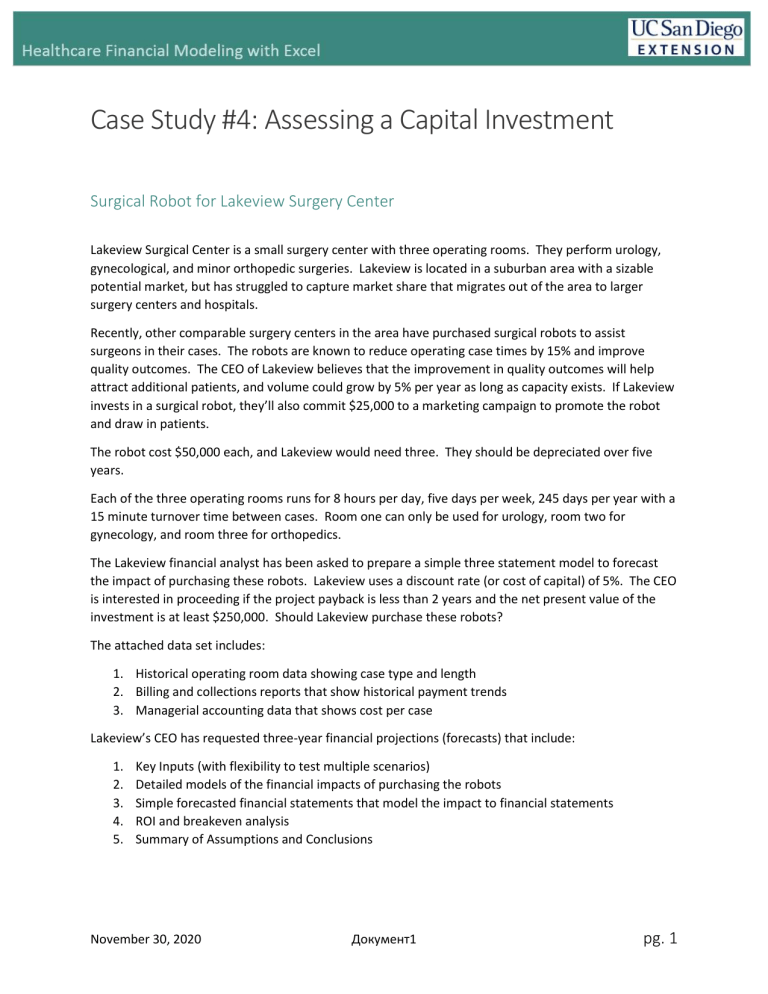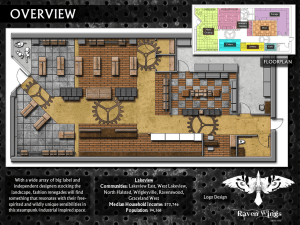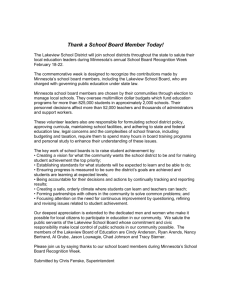
Case Study #4: Assessing a Capital Investment Surgical Robot for Lakeview Surgery Center Lakeview Surgical Center is a small surgery center with three operating rooms. They perform urology, gynecological, and minor orthopedic surgeries. Lakeview is located in a suburban area with a sizable potential market, but has struggled to capture market share that migrates out of the area to larger surgery centers and hospitals. Recently, other comparable surgery centers in the area have purchased surgical robots to assist surgeons in their cases. The robots are known to reduce operating case times by 15% and improve quality outcomes. The CEO of Lakeview believes that the improvement in quality outcomes will help attract additional patients, and volume could grow by 5% per year as long as capacity exists. If Lakeview invests in a surgical robot, they’ll also commit $25,000 to a marketing campaign to promote the robot and draw in patients. The robot cost $50,000 each, and Lakeview would need three. They should be depreciated over five years. Each of the three operating rooms runs for 8 hours per day, five days per week, 245 days per year with a 15 minute turnover time between cases. Room one can only be used for urology, room two for gynecology, and room three for orthopedics. The Lakeview financial analyst has been asked to prepare a simple three statement model to forecast the impact of purchasing these robots. Lakeview uses a discount rate (or cost of capital) of 5%. The CEO is interested in proceeding if the project payback is less than 2 years and the net present value of the investment is at least $250,000. Should Lakeview purchase these robots? The attached data set includes: 1. Historical operating room data showing case type and length 2. Billing and collections reports that show historical payment trends 3. Managerial accounting data that shows cost per case Lakeview’s CEO has requested three-year financial projections (forecasts) that include: 1. 2. 3. 4. 5. Key Inputs (with flexibility to test multiple scenarios) Detailed models of the financial impacts of purchasing the robots Simple forecasted financial statements that model the impact to financial statements ROI and breakeven analysis Summary of Assumptions and Conclusions November 30, 2020 Документ1 pg. 1

